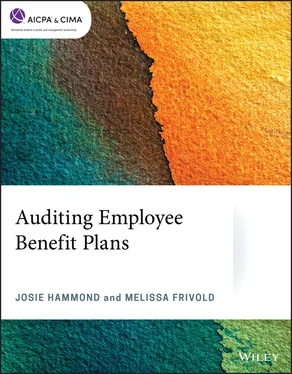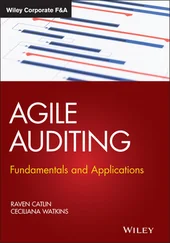Notes Notes 1 1 Donovan v. Dillingham, [3 EBC 2122, 3 EBC 1073, 5 EBC 2092, 688 F2d 1367 (1983)]. 2 2 Certain severance pay plans are exempt from classification as pension plans, but they are still classified as welfare benefit plans. 3 3 See DOL Advisory Opinion 83-06A. 4 4 IRC Section 409(l). 5 5 IRC Regulations 54.4975-7 and -11. 6 6 Revenue Ruling 79-122. 7 7 IRS Notice 2011-19. 8 8 DOL Technical Releases 88-01 ( https://www.dol.gov/agencies/ebsa/employers-and-advisers/guidance/technical-releases/88-01 ). 9 9 DOL Field Assistance Bulletin 2004-1( https://www.dol.gov/agencies/ebsa/employers-and-advisers/guidance/field-assistance-bulletins/2004-01 ); DOL Field Assistance Bulletin 2006-2 ( https://www.dol.gov/agencies/ebsa/employers-and-advisers/guidance/field-assistance-bulletins/2006-02 ). 10 10 IRS Notice 2011-1 provides that these rules will not be enforced until after regulations are issued. Regulations were issued on July 18, 2016, with the effective date generally deferred to plan years beginning on or after January 1, 2017. 11 11 IRC Section 436. 12 12 DOL Advisory Opinion 2012-04A. 13 13 See www.irs.gov/pub/irs-tege/rollover_chart.pdf for guidance for restrictions on certain rollovers.
3 Chapter 2: Accounting and Reporting Standards Chapter 2 Accounting and Reporting Standards Learning objectives After completing this chapter, you should be able to do the following: Identify applicable authoritative guidance surrounding employee benefit plans. Recognize unique accounting, reporting, and other requirements for employee benefit plan financial statements. Recognize accounting and reporting for merging and terminating plans. Identify recent developments affecting accounting and reporting for employee benefit plans.
Applicable guidance Applicable guidance Generally accepted auditing standards and accounting principles apply to employee benefit plans. In addition, the AICPA Audit and Accounting Guide Employee Benefit Plans , provides guidance to practitioners on certain accounting, auditing, and reporting matters unique to employee benefit plans. Defined benefit, defined contribution, and health and welfare are types of employee benefit plans. The objectives of financial reporting for all types of employee benefit plans are to report the resources available to fund participant benefits and the claims on those benefits. Regardless of plan type, employee benefit plan financial statements should include a statement of net assets available for benefits as of the end of the year and a statement of changes in net assets available for benefits. Defined benefit plans have additional statements in connection with disclosing the actuarial present value of accumulated benefits. Common elements in the financial statements of an employee benefit plan include investments, contributions receivable and received, investment income receivable and received, net appreciation (depreciation) in the fair value of investments, benefits paid and expenses paid. Refer to appendixes A – C and B-1–C-1 in this course and appendixes C – F in the Audit and Accounting Guide Employee Benefit Plans for illustrative financial statements and disclosures by plan type.
Fair value measurements Financial statements Investment valuation and income recognition Accounting and reporting for investment contracts Accounting and reporting for contributions Notes receivable from participants (participant loans) Operating assets Accrued liabilities Accounting for uncertainty in income taxes Plan mergers Terminating plans Subsequent events Recent developments
4 Chapter 3: Reporting and Audit Requirements Audit requirement Regulatory reporting and disclosure requirements for pension and welfare plans Deadlines and extensions The audit guide ERISA versus GAAP Audit considerations Common audit concerns or deficiencies Using the work of internal auditors Recent developments Note
5 Chapter 4: Audit Planning Key parties Client acceptance Scope and timing Gaining an understanding of a plan, its environment, and its internal controls Risk assessment Audit documentation Analytical procedures Initial audit procedures
6 Chapter 5: 401(k) and Other Defined Contribution Pension Plans (Except ESOPs) Determination of benefit amount Net assets available for benefits Changes in net assets available for benefits Investments Contributions receivable Notes receivable from participants Other operating assets Cash Accrued liabilities Investment income Contribution revenue Participant data and participant accounts Participant-directed versus self-directed Benefit payments Expenses Financial statement presentation and required disclosures 403(b) plans Note
7 Chapter 6: Defined Benefit Pension Plans Determination of benefit amount Financial statements Investments and investment income 401(h) accounts Funding Participant data and plan obligations Benefit payments Expenses Financial reporting and disclosure Plan transfers (plan mergers, spin-offs, and other transfers) Terminations Note
8 Chapter 7: Health and Welfare Plans Defined contribution versus defined benefit Challenges in auditing a health and welfare plan Components of the financial statements of a welfare benefit plan Unique features of a health and welfare benefit plan Disclosure requirements Reporting requirements
9 Chapter 8: Other Auditing Considerations Related party and party in interest transactions Prohibited transactions Untimely deposits of employee deferrals ERISA supplemental schedules Form 5500 information consistency with financial statements Tax status Auditing corrective actions Certified information Investment confirmations Going concern
10 Chapter 9: Wrapping Up Commitments and contingencies Subsequent events Representation letter from management Communication of internal control-related matters identified in an audit Management advice letter considerations Communication with those charged with governance
11 Appendix A: Illustrative Financial Statements and Disclosures for a Defined Contribution Plan With Participant-Directed and Nonparticipant-Directed Investment Programs
12 Appendix B: Illustrative Financial Statements and Disclosures for a Defined Benefit Plan Assuming an End-of-Year and Beginning-of-Year Benefit Information Dates Notes
13 Appendix C: Illustrative Financial Statements and Disclosures for a Health and Welfare Plan Notes
14 Appendix D: Illustrative Supplemental Schedule of Assets Notes
15 Appendix E: Illustrative Supplemental Schedule of Reportable Transactions
16 Appendix F: Illustrative Example of an Engagement Letter for a 401(k) Employee Benefit Plan Audit Engagement Notes
17 Appendix G: Small Pension Plan Audit Waiver Decision Tree
18 Appendix H: Report Modifications Chart Notes
19 Appendix I: Pension Plan Audit Decision Tree Note
20 Appendix J: Illustrative Supplemental Schedule of Delinquent Participant Contributions
21 Employee Benefit Plans Glossary
22 Index
23 SolutionsChapter 1 Chapter 2 Chapter 3 Chapter 4 Chapter 5 Chapter 6 Chapter 7 Chapter 8 Chapter 9
24 End User License Agreement
1 Cover
2 Table of Contents
3 Begin Reading
1 i
2 ii
3 1-1
4 1-2
5 1-3
6 1-4
7 1-5
8 1-6
9 1-7
10 1-8
11 1-9
12 1-10
13 1-11
14 1-12
15 1-13
16 1-14
17 1-15
18 1-16
19 1-17
20 1-18
21 1-19
22 1-20
23 1-21
24 1-22
25 1-23
26 1-24
27 1-25
28 1-26
29 1-27
30 1-28
31 1-29
32 1-30
33 1-31
34 1-32
35 2-1
36 2-2
37 2-3
38 2-4
39 2-5
40 2-6
41 2-7
42 2-8
43 2-9
44 2-10
45 2-11
46 2-12
Читать дальше











